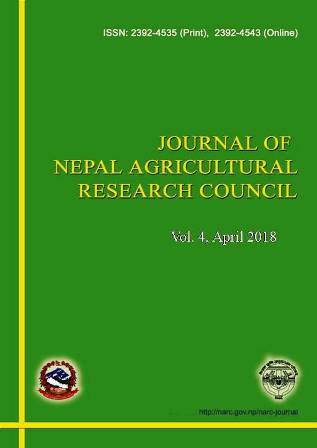Milling, Nutritional, Physical and Cooking Properties of Four Basmati Rice Varieties
DOI:
https://doi.org/10.3126/jnarc.v4i1.19686Keywords:
Alkali spreading, Degree of milling, Gruel loss, Water uptake ratioAbstract
Rice is one of the most popular staple foods produced contributing higher most in agriculture gross domestic production in Nepal. Thus, nutritional, physicochemical, and cooking properties of rice might interplay important roles in their production and farming practice, therefore, it is inevitable to understand these characteristic features. However, there has been only limited information available on such properties, therefore we aimed to examine nutritional, physicochemical and cooking properties of four Basmati varieties of rice namely Red Basmati, White Basmati, Black Basmati and Pokhareli Basmati. These rice varieties were purchased from different places in Nepal in paddy form. In this study various parameters associated with milling, nutritional, physical and cooking properties were evaluated. To measure protein contents in rice, Kjeldal method was implied. Among the varieties, the protein content was maximum in Red Basmati (7.74%) and minimum in Black Basmati (6.51%). The milled rice percentage and head rice recovery were maximum in Pokhareli Basmati represented by 72.02±0.10 and 67.46±0.42, respectively, while and minimum in White Basmati represented by 68.17±0.50 and 65.11±0.28, respectively. The kernel elongation ratio and volume expansion ratio was maximum in Red Basmati represented by 1.62 and 2.85 respectively. Water uptake ratio was maximum 3.11 in Black Basmati and minimum of 2.18 in Red Basmati. Gruel loss was found lowest 1.05% in Red Basmati and highest represented by 2.40% in Black Basmati. The highest starch iodine blue value of 0.21 was observed in Red Basmati and lowest of 0.12 in Black Basmati. The Red Basmati was found to have the better cooking quality among all varieties.
Downloads
Downloads
Published
How to Cite
Issue
Section
License
This license enables reusers to distribute, remix, adapt, and build upon the material in any medium or format for noncommercial purposes only, and only so long as attribution is given to the creator.

